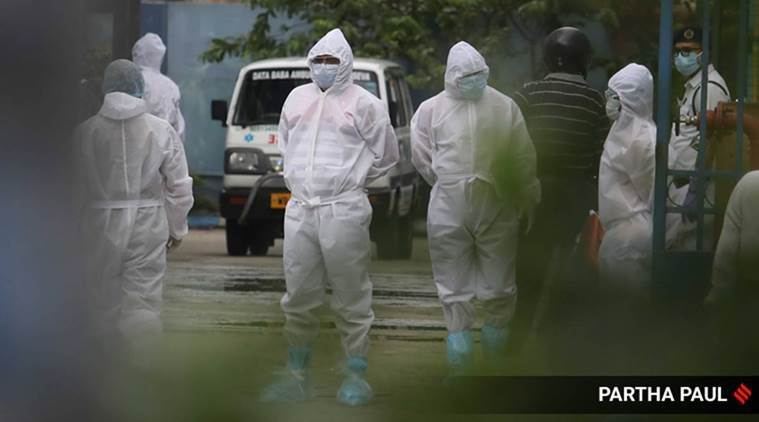 Except for a few hotspots, India is doing well when compared to other countries.
Except for a few hotspots, India is doing well when compared to other countries.
Plague, the disease caused by the bacterium Yersinia pestis, had devastated mankind for centuries but was ultimately tamed. Today, the COVID-19 pandemic has plagued the world like a tsunami. While plague was considered a disease of the poor and backward societies, COVID-19 respects no boundaries, class, or creed.
In his celebrated work, The Black Swan, Nassim Nicholas Taleb hypothesised a black swan event as one that is unexpected, rare, and has a wide-ranging impact. The present crisis, a sound proof of his theory, has the potential to change the existing world order. Rationalists will surely try to explain and write multiple obituaries of the crisis given the benefit of hindsight and armed with some conspiracy theories. But it will go down as the most humbling of times in modern history. A crisis of such magnitude and impact mandates sound solutions. The society’s focus has blissfully shifted to science.
The solution seems simple but extremely difficult to implement. The Chinese model of a complete curfew, like a shutdown, was initially dubbed as “draconian”. But most countries have implemented it. India was among the first few countries which took the bold decision to enforce a nation-wide lockdown. The world has come to a standstill today, scientifically termed as a state of suspended animation.
Hibernation is a well-known survival strategy employed by many animal species to avoid hostile conditions. The body’s cellular machinery slows down appreciably to bring its energy requirement to the bare minimum, which can be met with the body’s meagre reserves. As hostile conditions improve, the body comes back to life slowly but surely rejuvenated. Medical science has used hibernation successfully in critically-ill patients by lowering body temperature to <350 degrees Celsius (controlled hypothermia) to let the fire subside. Tapasya in the Indian tradition is a spiritual equivalent of hibernation. It would not require extraordinary imagination to draw an analogy between individuals and society in the present context. Today, the society is in suspended animation, a state of hibernation. How are we faring in this journey?
Except for a few hotspots, India is doing well when compared to other countries. As of now, the only consistent scientific strategy is to restrain people from close contact to contain the infection. The opposite argument of herd immunity through free and wider spread of the infection has not found many takers. The next step is to track, test and treat in isolation. We must stick to the plan and not loosen the grip. Thankfully, India cannot be blamed for the global crisis, unlike the naming of a resistant bacteria gene as New Delhi Metallo-beta-lactamase 1 (NDM-1). On the contrary, India might come out relatively unscathed due to the concerted and coordinated swift action by the government.
Some of the fallacies of modern medicine have been exposed during this pandemic. One important take away is that we should stop accepting “Western prescriptions”. We must develop our own model of cost-effective care with compassion and equity, and have the humility of accepting the limitations of our armamentarium. The government must prioritise and invest enough in medical research much like space and defence.
For the rich and the well-endowed, consumption has been conspicuous and often copious. They may complain about the lack of access to material pleasures but will come to terms when it is a matter of trading luxury with life. For the poor, it would not matter much as long as their basic needs are taken care of. Their survival instinct, geared to face the challenges, will see them sail through. They don’t need to visit the malls, food courts, and cineplex or vacation in Europe to “unwind and relax”.
Another concern is the state of the economy. Economists look at the stock market. They are worried if some imaginary wealth on paper is wiped out in a day. Nobody questions the creation of that wealth based on assumptions and expected future earnings when the stocks see huge gains following a single announcement. A quick calculation shows the US Dow Jones fell by 35 per cent from February 21 to March 23 (equalling nearly $11 trillion in market cap) but gained 27 per cent over 16 days on April 9. The Sensex lost exactly 35 per cent and gained 20 per cent over the same period. One wonders where the money was lost and how was it regained. For argument sake, let the Indian economy shrink to 2018 level at $2.7 trillion (World Bank data). So what? A $2.7 trillion economy was no disaster. The projected growth is still 1.5-2 per cent. The real problem is for the contract worker and poor farmer. Their hardship is being recognised and softened by the state. The government must compensate their lost wages.
Humans have triumphed after each crisis and learned lessons. This time won’t be different. It is time for introspection and some serious thinking. Nature seems to be smiling again telling us to mend our ways of disturbing its ecosystem. A somewhat slower pace of life even if that means slower growth of GDP numbers with greater investment in social well-being should be the mantra. Preparing against a future black swan, howsoever remote, is of utmost importance.
But in these uncertain times, the buck stops at the doctor’s doorstep.
This article first appeared in the print edition on May 7, 2020 under the title “A mantra for post Covid world”. The author is a professor at AIIMS, New Delhi.